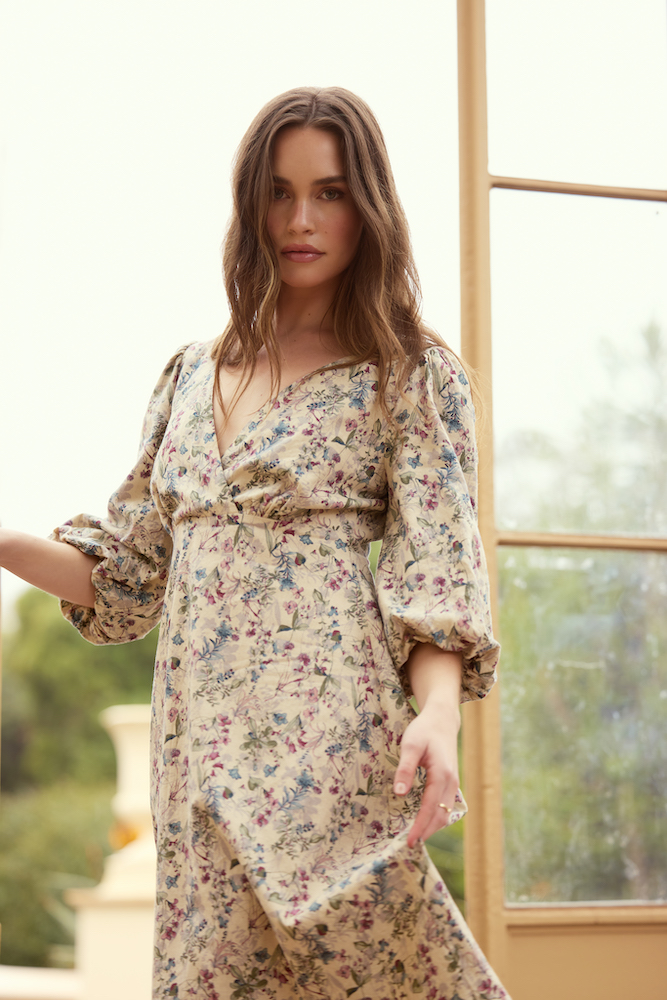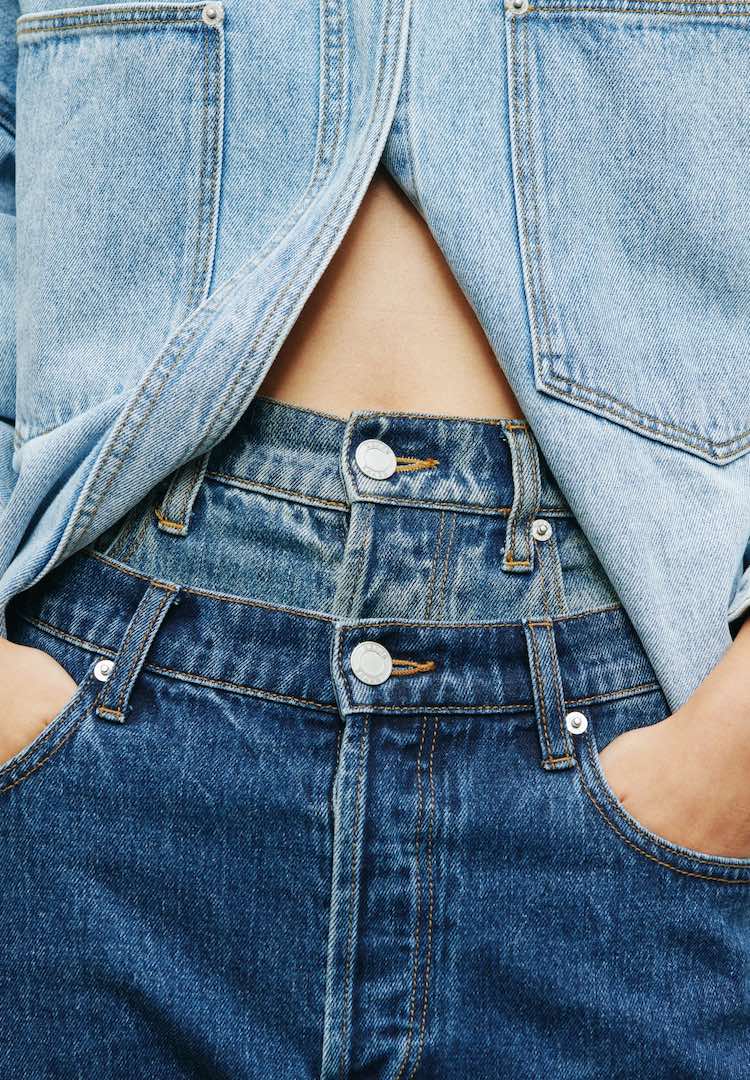The best fabrics to look for when building your summer capsule wardrobe
In partnership with ELLEE THE LABEL
words by ella ferris
Easy, breezy and good for the planet.
Ah, the linen dress. It’s the romantic little sister, or maybe cousin, of the Little Black Dress. It’s a staple in every wardrobe because of its versatility, durability, and breathability. From European summers all the way through to Melbourne winters, the linen dress can always have a place in the rotation. Better yet, linen is one of the few fabrics where its production doesn’t deplete or pollute water sources or use harsh chemicals and fossil fuels – it’s even biodegradable.
The key to building a timeless wardrobe that works all year ’round is to choose your materials mindfully. It’s something sisters Abbey Smythe and Jess Smythe-Castine have dedicated a lot of time to researching. Abbey and Jess founded the womenswear company Ellee the Label to pursue their shared passion for effortlessly beautiful, flattering fashion design that leaves a lighter footprint on our planet.
For more fashion news, shoots, articles and features, head to our Fashion section.
Their pieces are proudly designed and made in Australia using conscious materials like linen, cotton, Tencel and Cupro, made from 100 per cent natural and cellulose fibres. With a collection spanning event wear to casual dresses and separates, you’ll find romantic silhouettes in subtle hues and soft florals, emulating the whimsy of a garden.
From the concept to the manufacturing process, all the way through to the finished product, Ellee the Label has the environment in mind. It’s a refreshing perspective, given the monumental increase in synthetic fibre production over the past five years, which goes hand-in-hand with the increase in fast-fashion consumption.
According to The Australia Institute, over 200,000 tonnes of clothing ends up in landfill each year (that’s close to four times the weight of the Sydney Harbour Bridge!) This doesn’t even account for the hundreds of tonnes of clothing exported out of Australia that ends up in landfill elsewhere. Now more than ever, we need to be shopping consciously and seeking out labels who are transparent about their processes.

You might have heard the saying, ‘Buy nice or buy twice‘, which emphasises investing in quality clothing, rather than repeatedly buying poorly-produced items at a cheaper price. Following the fast-fashion model of consumption usually ends up with our unwanted clothing in landfill, where it can take hundreds of years to decompose. ‘Buying nice’ is a step many people are taking to reduce their personal carbon footprint, but it’s also a smart financial choice. Investing a little more time and money into high-quality garments might seem daunting, but in the long run, it can reduce the amount of money spent repurchasing or repairing poorly-made products.
In a world where shiny advertising encourages us to ignore how our clothing is produced, checking the label or website to make an informed decision about your purchases is a powerful choice. It might not occur to many that the vast majority of clothing is made using fossil fuels, the biggest contributor to climate change. Any garment with ‘polyester’, ‘PET’, or ‘acrylic’ on the label is essentially made from petroleum-derived plastics, which are damaging for the earth and potentially the health of our skin.
With each wash, a polyester garment releases up to 1,900 non-biodegradable microfibers into our waterways. Polyester is also non-breathable, meaning it can irritate the skin and retain odour. If you’ve ever been out and about on a hot day (or sweaty nightclub) in a synthetic top without access to deodorant, you know it’s not pretty.

What are some conscious materials to look for?
If you’re unsure what pieces to invest in as we head into summer, knowing your materials is a great place to start. Garments from Ellee the Label are made using blends of linen, cotton, Tencel and Cupro to create transeasonal garments that are gentle on the skin. Linen, the bread and butter of the eco-friendly materials, is made from the flax plant. It’s lightweight yet durable, meaning it can be worn throughout the year (with careful layering) and you can depend on it lasting. The more you wear linen, the more soft and comfortable it becomes, meaning it actually gets better with age. It’s also biodegradable and uses very little water, fertilisers or chemicals in its production, making the final product safe for our skin.
Cotton is a fabric that’s hypoallergenic, extremely durable and also biodegradable, when disposed of properly. It’s a great alternative to polyester. Cupro is a regenerative cellulose fiber made from the waste that would usually be discarded in the cotton manufacturing process. It feels soft and luxurious, and can be used as a vegan alternative to silk.

Viscose (Tencel) is a lightweight material made from wood pulp sourced from fast-growing plants that don’t require irrigation or harsh chemicals or pesticides. All of these fabrics are moisture-wicking, meaning they move any moisture to the outer layer of the fabric where it dries rapidly. It’s pretty magical, especially as we head into the warmer months.
For a wonderful example of transparency from a fashion brand, you can read more about the materials over on Ellee the Label’s Responsible Business and Design page. There you can also find insight into their fabric-sourcing process, manufacturing partners, their goal to obtain their carbon neutral certification and their commitment to their community, like donating $1 from each order towards women’s health and empowerment initiatives.
In celebration of their commitment to sustainability and their community, Ellee the Label are running a giveaway. For the chance to win a $1000 wardrobe voucher, head to their website or Instagram and follow the steps.
To browse the full range of Ellee the Label, head here.













